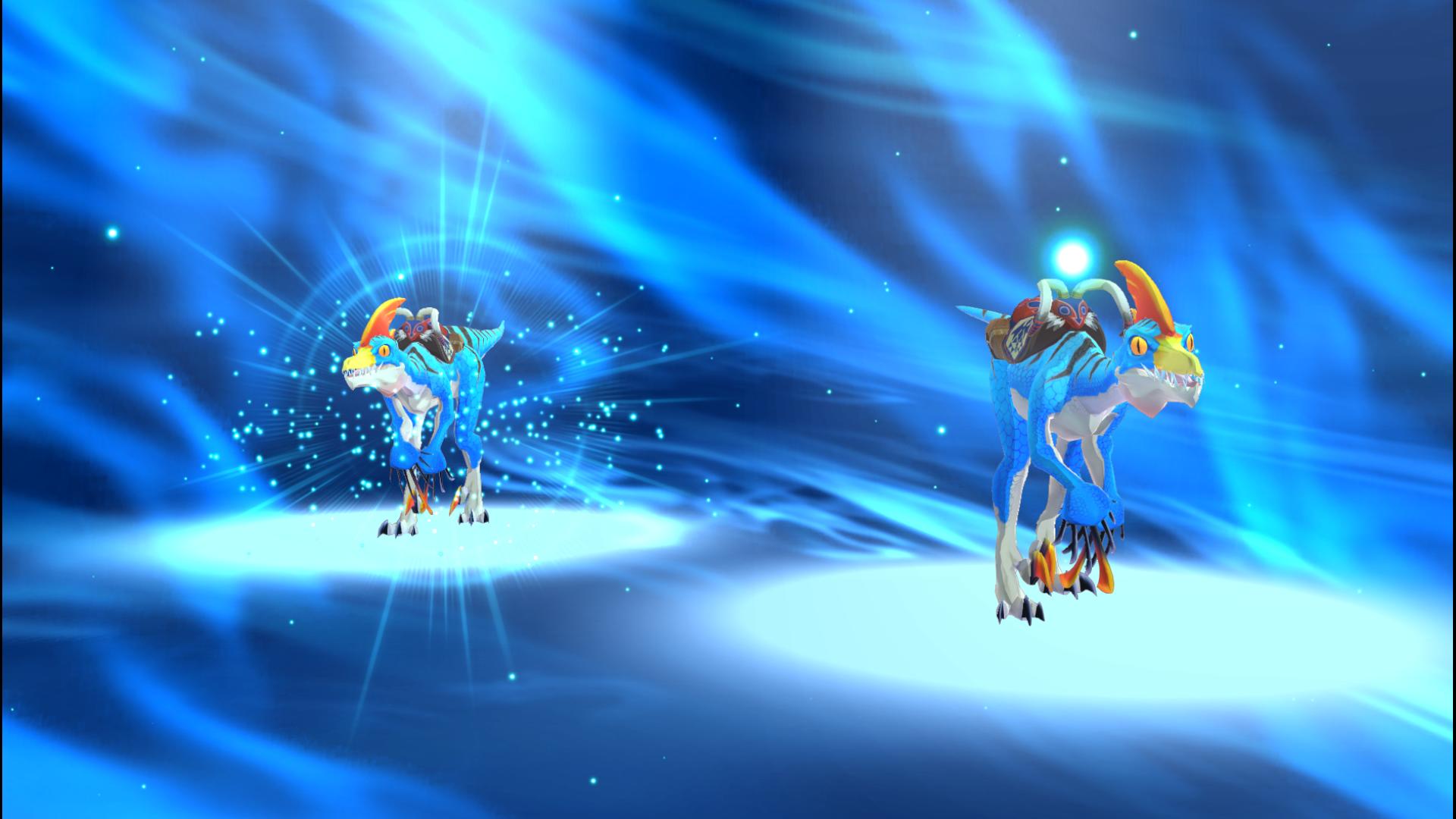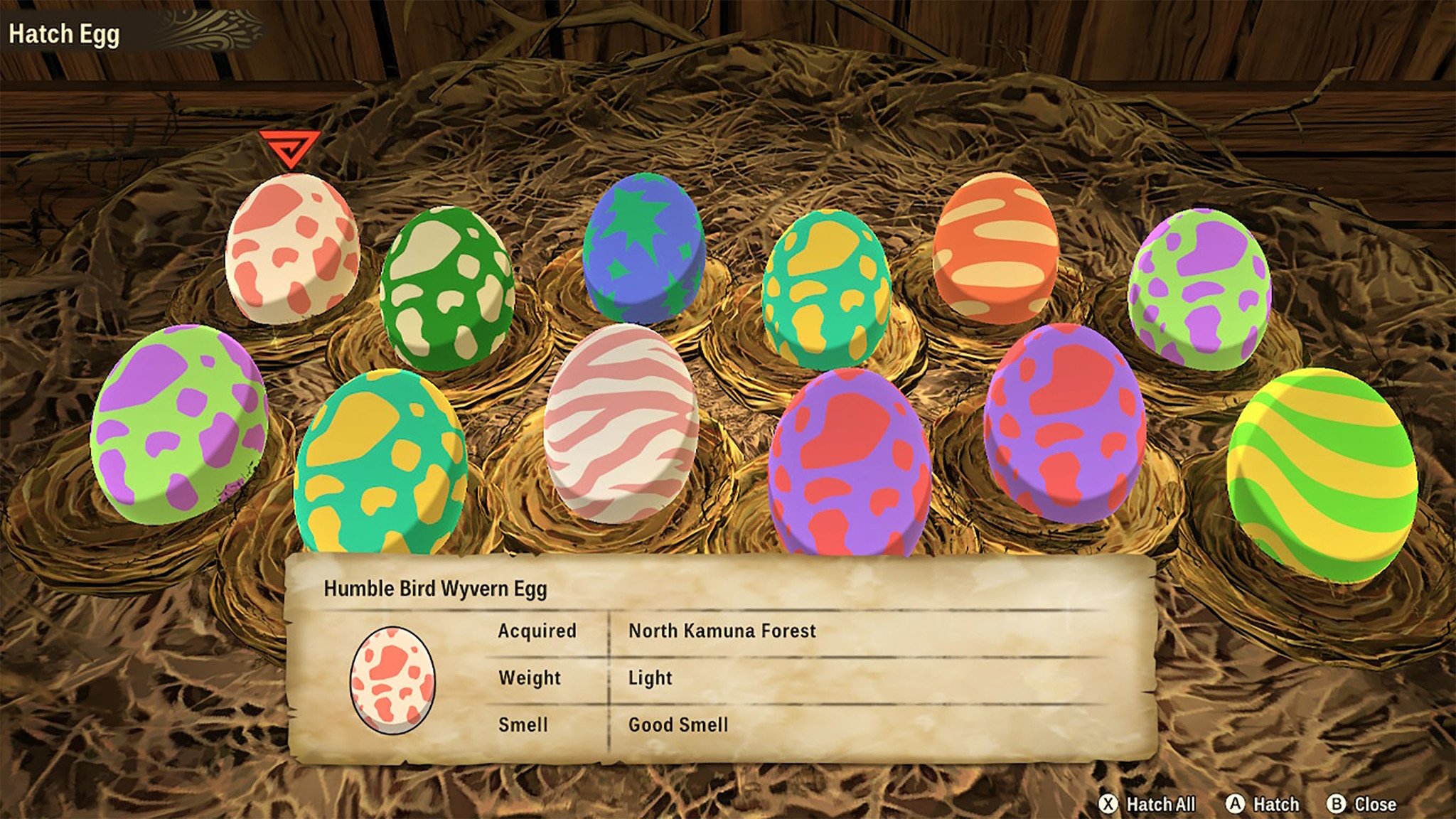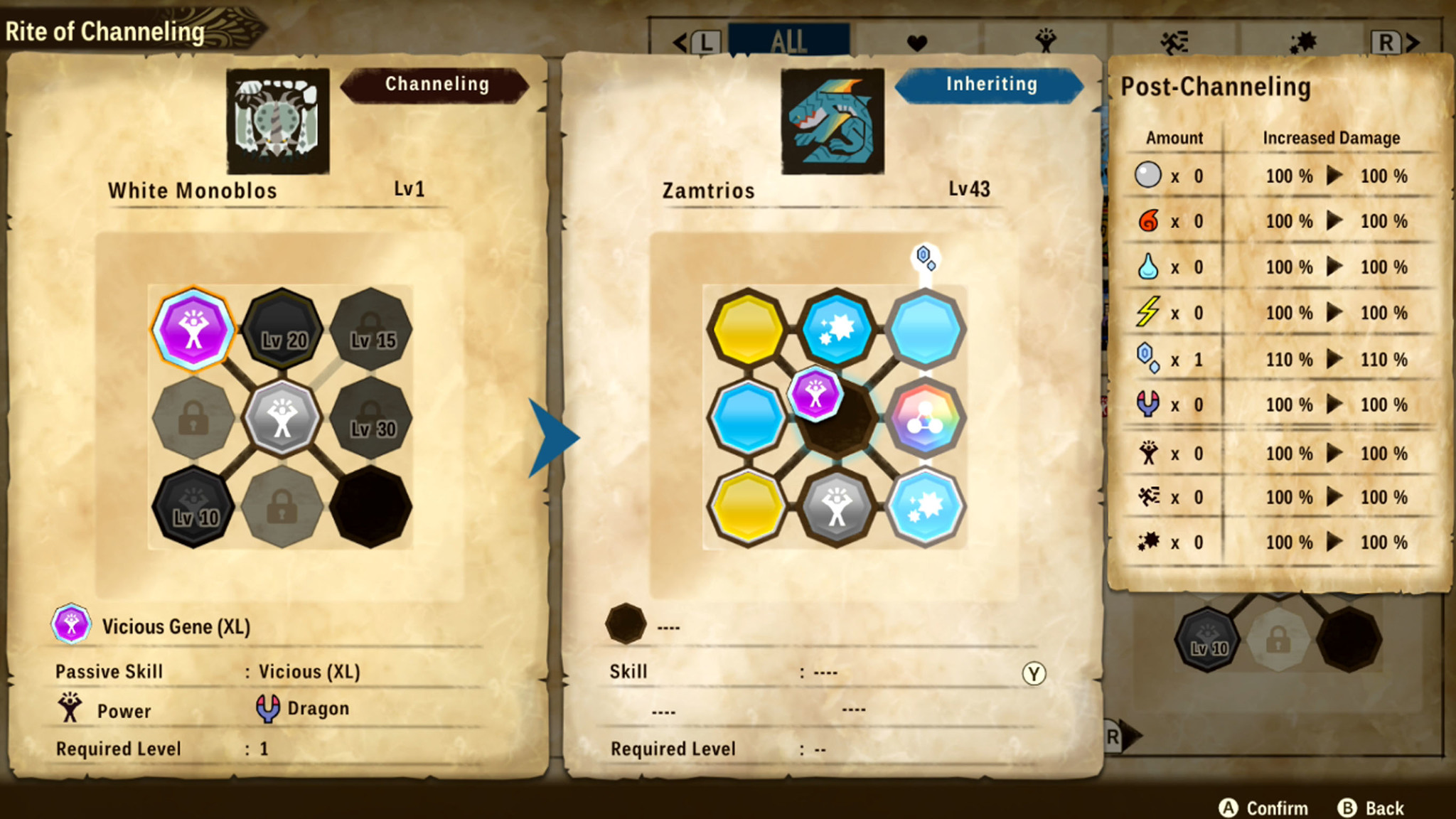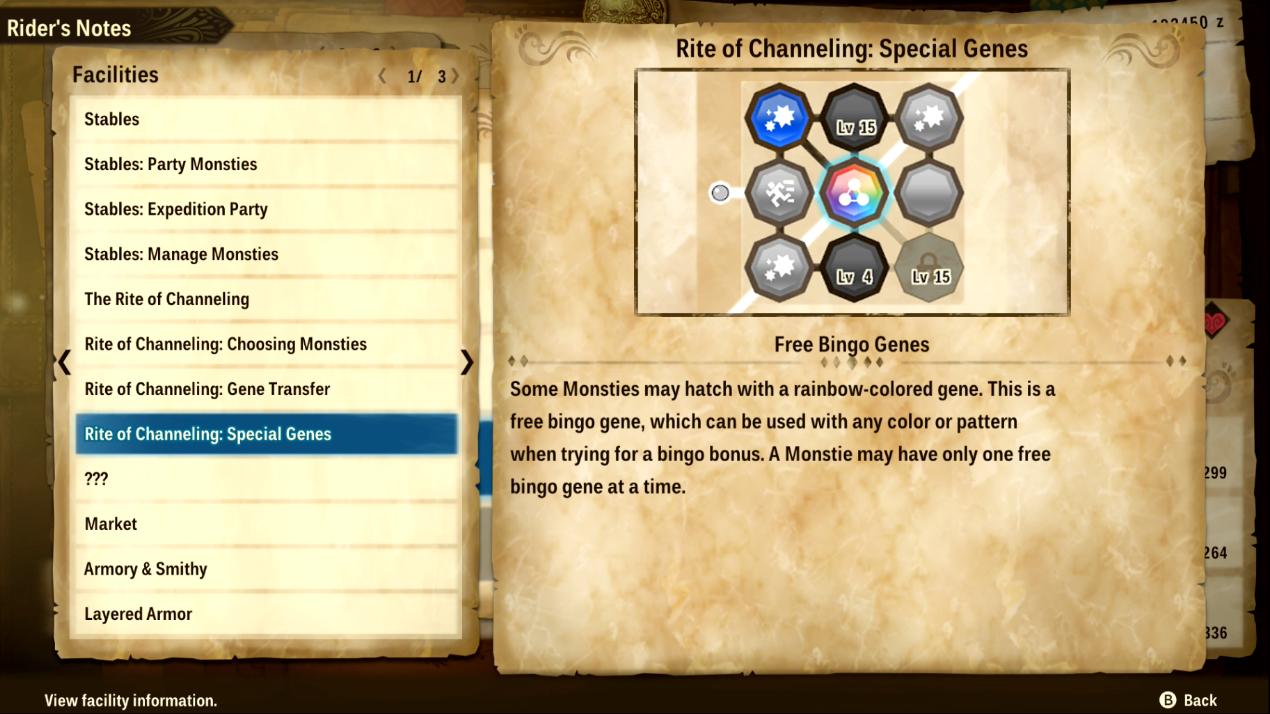Monster Hunter Stories 2 Rite of Channeling guide: Genes, egg color patterns, and awakening powers

The world of Monster Hunter Stories 2: Wings of Ruin is under threat of monsters going berserk, and the Rathalos are disappearing. As a Monster Rider, it is up to you and your Monsties to stop the rampaging beasts from destroying everything and find out where the Rathalos have flown off to.
But relying on your Monsties' natural strengths alone won't be enough to overcome the challenges ahead. You will need to make them stronger and give them new abilities through a ritual known as the Rite of Channeling. This is a fairly complex system where it's easy to make mistakes your first time using it and you may end up creating a Monstie that could barely fight. So today, we're going to go over how to use the Rite of Channeling effectively, so you can create the ultimate Monstie.
Finding Monstie eggs

To use the Rite of Channeling, we need to get some Monsties to use it on. To obtain a Monstie, you will need to explore Monster Dens, Rare Monster Dens, and Everdens until you come upon a monster nest and swipe a Monstie egg.
If there is a specific Monstie you want to get, you can chuck a paintball at a monster during battle. If you defeat the monster while the paintball is still in effect, you get a chance to track the monster back to its den and steal one of its eggs. You can also fulfill certain conditions in a battle to increase the chances of tracking the monster back to its den on top of using the paintball. You can find what the specific condition is for a monster in their Monsterpedia entry.
Ensure you are prepared for battle before approaching the nest because sometimes a monster may guard it. If a monster is not there, they might come back if you take too long searching the nest for eggs.
When you find an egg, your Felyne companion Navirou will inform you how much it weighs and smells. We'll get more in-depth on why this is important later. Every Monstie's egg has a unique color scheme, and it is recorded in their Monstipedia entry once you hatch it. This will help you keep track of which Monstie the egg will hatch into. Once you get an egg you want, run back to town before it's parent comes back.
Time to Channel our Rites

Once you've taken your egg back to town, you will use your Kinship Stone to hatch it and place them in the stables. Once you get over how cute the juvenile form of a Monstie is, it is time to use the Rite of Channeling. What the Rite of Channeling exactly does is transfer the genes of a Monstie into another to give them new abilities. These genes can range from passive abilities that buff its stats to special attacks that a Monstie would never learn naturally. You have nine slots to insert genes in, but some of them may be locked. These locks require leveling up a Monstie or using a Stimulant item to unlock.
Master your iPhone in minutes
iMore offers spot-on advice and guidance from our team of experts, with decades of Apple device experience to lean on. Learn more with iMore!
This is where the smell and weight of a Monstie's egg come into play. If an egg is really heavy, you will have fewer locks to unlock on the gene slots. And if an egg really smells, that Monstie will have rarer and more powerful genes. You can find the heaviest and smelliest eggs in Rare Monster Dens and by using Prayer Pot to give you an extra chance of finding an egg with rare genes.
When inserting genes, you may notice a passive bonus activate. This comes from a Gene Bingo Chart, which gives Monsties a percentage damage bonus towards an element or an attack-type if you line certain genes in a row. For example, if you line three fire genes with the power attack-type in a row, you get a damage bonus for your fire attacks and your Power attack-type moves. And these damages bonuses can stack the more rows you line up.

Bingo chart bonuses are also activated by the rainbow-colored Free Bingo Gene. This gene will allow you to link up multiple genes together to achieve a bingo bonus. However, the drawback is that Free Bingo Genes don't offer any passive abilities or special attacks of their own and you can only insert one of them into a Monstie.
And if damage bonuses from bingo charts weren't enough, you can also stack genes on top of each other to upgrade its attack power, critical hit rate, or status effect proc rate. This can be done up to two times and it has to be the same gene.
One final word of warning: When you extract genes from a Monstie, it will permanently leave your party. So, make sure to save your game before making your decision.
The finished product

There are many ways you can customize your Monstie. You can give them genes that focus on pure offense and crippling an enemy's stats. You can insert support genes that focus on healing the party and increasing their attack power. Or you can give your Monsties a variety of special moves to help them win Head-to-Heads.
For example, my Zamtrios is an Ice-elemental monster that originally used Technique attacks only. So, I inserted Speed and Power attack-type genes from a Barioth and a Legiana genes into him to expand his move-set. I also made sure those genes had the Ice-element, so I could line them up to activate the passive damage bonus for his Ice attacks from the bingo chart.
Are you ready to create the best Monsties in the world?
And that covers how the Rite of Channeling works and how to use it. We hope this guide has helped you understand how to make your favorite Monsties more powerful. Good luck finding those missing Rathalos. It will be a long journey, so be sure to procure a microSD card for your Nintendo Switch to record your progress. Ride on!
Alexander Cope is a writer for Windows Central and iMore that has been gaming since the 16-bit era.

